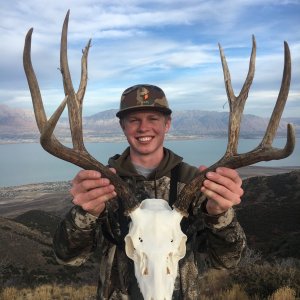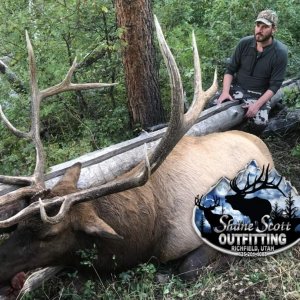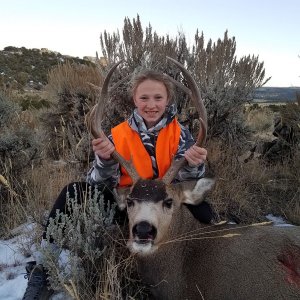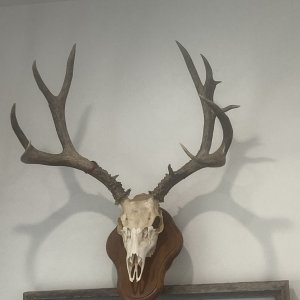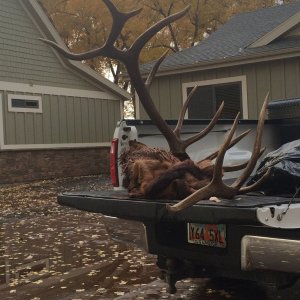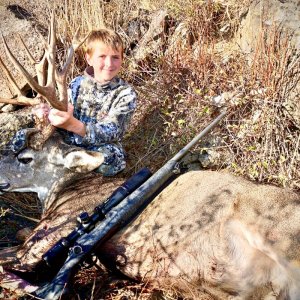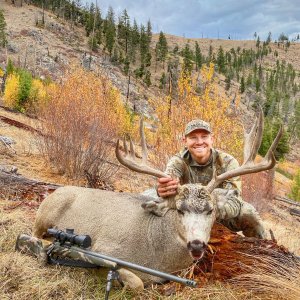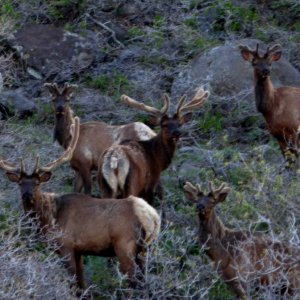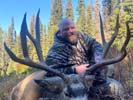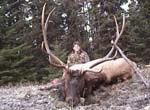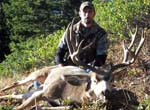M
MortgageMan
Guest
I just read this, check it out
http://www.msnbc.msn.com/id/17964382/
BOISE, Idaho - For years, ATV-riding, gun-toting sport shooters have flouted gun laws in part of Idaho?s high desert by taking pot shots at ground squirrels and other animals.
Now, officials say, they're also setting their sights on National Guard tanks that train in the area.
Rifles and pistols have been banned in a 68,000-acre area of the Snake River Birds of Prey National Conservation Area since 1996.
But the federal Bureau of Land Management is considering expanding the gun-restricted area by 41,000 acres to try to limit shootings at Idaho Army National Guard troops who report slugs bouncing off their tanks on a regular basis.
?There?s a segment of the shooting community that will shoot at anything that moves,? said John Sullivan, the area?s manager.
National Guard spokeswoman Lt. Col. Stephanie Dowling said she thinks the proposed expansion would help alleviate the problem.
?What's happened over time, as the population has grown, we get more and more people out there,? said Dowling. ?Not everybody uses good safety precautions.?
Idaho is the third-fastest growing state, after only Nevada and Arizona.
Rancher Tom Nicholson sees changes in the range as more people move to Boise 25 miles away, then drive out into this mostly open country looking for fun.
The region is part of a 490,000-acre federal preserve where prairie falcons and eagles soar above, hunting ground squirrels that pop their heads by the thousands above the warming earth.
With just two agents to patrol 4 million acres of desert near Boise, gun enthusiasts regularly defy the ban by shooting squirrels, protected birds and even grazing cattle, park officials say.
Little chance of arrest
Because money is already stretched thin, land management agents generally only cite illegal shooters they catch in the act. A photographer recently captured what looked to be a squirrel gunner in a restricted part of the conservation area, but even in that case, chances of prosecution are slim.
?If that was a photo of sufficient clarity that we could identify him, we would seek to prosecute,? Sullivan said.
Fewer than 10 people per year are ticketed for illegal shooting in the area of the park, said Sullivan. A citation carries a penalty of up to a $1,000 fine and a year in prison.
Mark Fuller, director of the Rapter Research Center at Boise State University, estimates that dozens of protected birds are shot annually in the park, including in the restricted area.
Birds, livestock in cross hairs, too
He said the long-term negative effects on the park?s 24 bird species populations haven't yet been documented.
Nicholson, who owns thousands of cattle that graze in the park, said shooters kill several each year.
He?s remarkably forgiving, especially for someone who is out more than $1,000 every time a cow dies.
?It's public land,? Nicholson said. ?They have as much right to be on the range as we do.?
Shotguns, which have a shorter range, are still allowed in the area.
The situation was even worse before the rifle-and-pistol ban in 1996, Sullivan said.
Soldiers training for missions in Iraq or other war zones are only looking for simulated battles, he said ? not real bullets whizzing their way.
?It was like World War III on the weekends,? he said.
http://www.msnbc.msn.com/id/17964382/
BOISE, Idaho - For years, ATV-riding, gun-toting sport shooters have flouted gun laws in part of Idaho?s high desert by taking pot shots at ground squirrels and other animals.
Now, officials say, they're also setting their sights on National Guard tanks that train in the area.
Rifles and pistols have been banned in a 68,000-acre area of the Snake River Birds of Prey National Conservation Area since 1996.
But the federal Bureau of Land Management is considering expanding the gun-restricted area by 41,000 acres to try to limit shootings at Idaho Army National Guard troops who report slugs bouncing off their tanks on a regular basis.
?There?s a segment of the shooting community that will shoot at anything that moves,? said John Sullivan, the area?s manager.
National Guard spokeswoman Lt. Col. Stephanie Dowling said she thinks the proposed expansion would help alleviate the problem.
?What's happened over time, as the population has grown, we get more and more people out there,? said Dowling. ?Not everybody uses good safety precautions.?
Idaho is the third-fastest growing state, after only Nevada and Arizona.
Rancher Tom Nicholson sees changes in the range as more people move to Boise 25 miles away, then drive out into this mostly open country looking for fun.
The region is part of a 490,000-acre federal preserve where prairie falcons and eagles soar above, hunting ground squirrels that pop their heads by the thousands above the warming earth.
With just two agents to patrol 4 million acres of desert near Boise, gun enthusiasts regularly defy the ban by shooting squirrels, protected birds and even grazing cattle, park officials say.
Little chance of arrest
Because money is already stretched thin, land management agents generally only cite illegal shooters they catch in the act. A photographer recently captured what looked to be a squirrel gunner in a restricted part of the conservation area, but even in that case, chances of prosecution are slim.
?If that was a photo of sufficient clarity that we could identify him, we would seek to prosecute,? Sullivan said.
Fewer than 10 people per year are ticketed for illegal shooting in the area of the park, said Sullivan. A citation carries a penalty of up to a $1,000 fine and a year in prison.
Mark Fuller, director of the Rapter Research Center at Boise State University, estimates that dozens of protected birds are shot annually in the park, including in the restricted area.
Birds, livestock in cross hairs, too
He said the long-term negative effects on the park?s 24 bird species populations haven't yet been documented.
Nicholson, who owns thousands of cattle that graze in the park, said shooters kill several each year.
He?s remarkably forgiving, especially for someone who is out more than $1,000 every time a cow dies.
?It's public land,? Nicholson said. ?They have as much right to be on the range as we do.?
Shotguns, which have a shorter range, are still allowed in the area.
The situation was even worse before the rifle-and-pistol ban in 1996, Sullivan said.
Soldiers training for missions in Iraq or other war zones are only looking for simulated battles, he said ? not real bullets whizzing their way.
?It was like World War III on the weekends,? he said.


